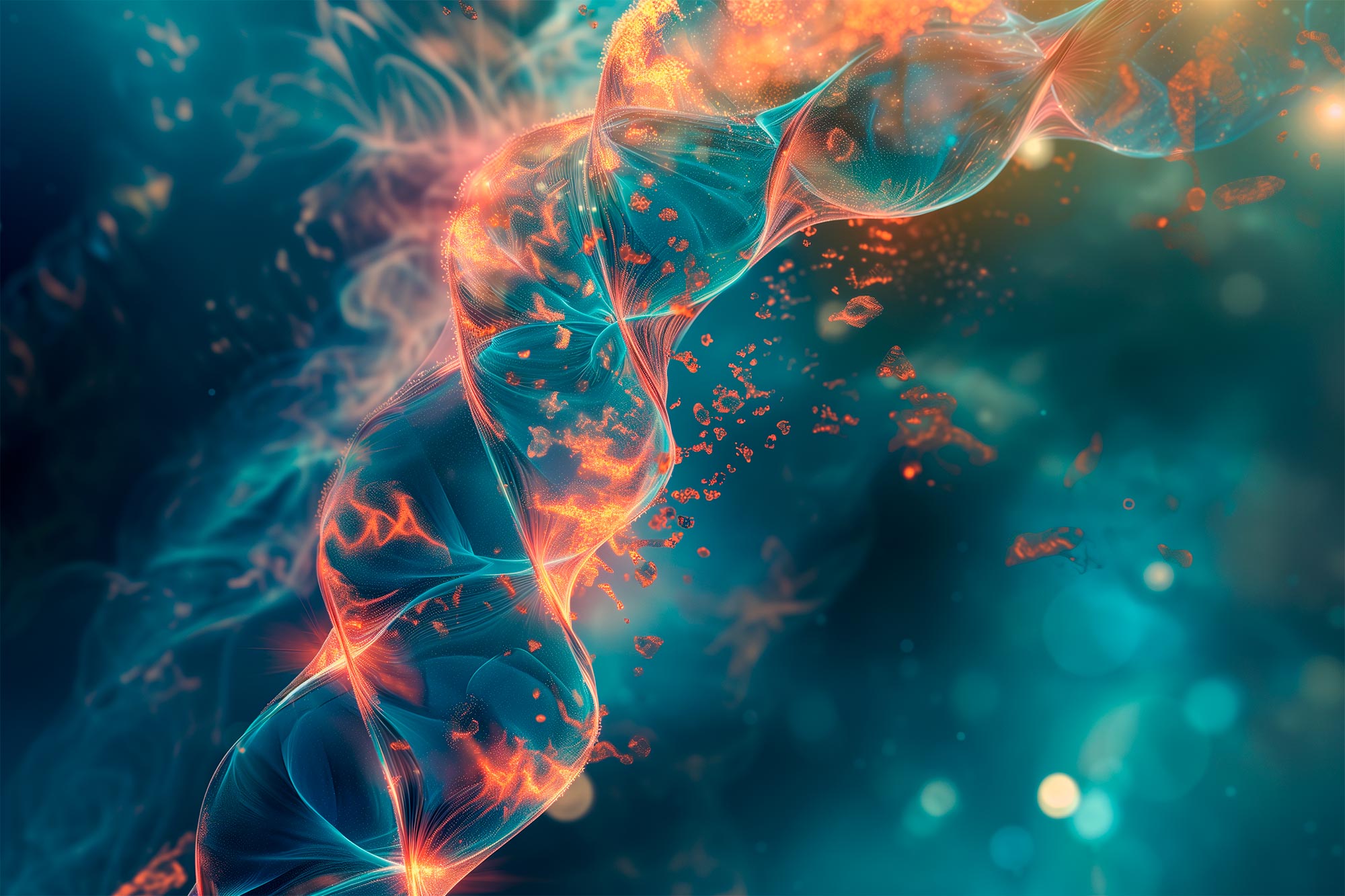

Scientists at NYU have created a drug that targets cancer-causing HER2 mutations without harming healthy cells.
This new approach could lead to cancer treatments that are both more precise and have fewer side effects. The technique is still in development but shows great potential for improving cancer therapy.
Mutant Proteins and Cancer
Some proteins can become cancer-causing with just a single mutation or change in their DNA instructions. Despite their role in causing major diseases, these mutated proteins often look so much like their normal counterparts that treatments aimed at the mutant proteins can also harm healthy cells.
A team of researchers at NYU Langone Health and its Perlmutter Cancer Center has developed a biologic, a drug derived from natural systems, that specifically targets a mutated form of the HER2 protein (human epidermal growth factor receptor 2) linked to cancer, while sparing the normal version on healthy cells. Although still in early stages, this approach has the potential to create new therapies for HER2-positive cancer patients with fewer side effects.
“We set out to make an antibody that can recognize a single change in the 600 amino acid building blocks that make up the exposed part of the HER2 protein, which conventional wisdom says is very difficult, said lead study author Shohei Koide, PhD, a professor in the Department of Biochemistry and Molecular Pharmacology at NYU Grossman School of Medicine and member of Perlmutter Cancer Center. “The fact that we were able to detect the difference of a single amino acid so cleanly was a surprise.”
The Challenge of Distinguishing Mutant HER2
The new findings revolve around HER2, a protein that occurs on the surfaces of many cell types and that turns on signaling pathways that control cell growth. It can cause cancer when a single amino acid swap locks the protein into “always-active” mode, which in turn causes cells to divide and multiply uncontrollably.
Cancer can also result when cells accidentally make extra copies of the DNA instructions that code for the normal version of HER2 and express higher levels of the protein on their surfaces. There are a few FDA-approved therapies, including trastuzumab and pertuzumab, that can treat this kind of cancer, but these therapies all work at the level of HER2 on the cell surface, where only low levels of the mutated version of HER2 occur. “That means we cannot mark cancer cells just by looking at HER2 levels,” said Dr. Koide, who also serves as director of cancer biologics at NYU Langone. In addition, since some approved therapies cannot tell the difference between mutant and normal HER2, they are more likely to harm healthy cells expressing normal HER2.
A New Approach in Cancer Therapy Development
Publishing online today (October 22) in the journal Nature Chemical Biology, the study shows how the researchers harnessed their new protein-engineering technique to develop antibodies that recognize only mutant HER2. Antibodies are large, Y-shaped proteins that bind to specific targets and flag down immune cells to destroy those targets.
In a process that mimics natural antibody development, the researchers subjected antibodies to multiple rounds of mutation and selection, looking for variants that recognized mutant HER2 but not the normal version. By taking atomic images with a cryo-electron microscope, the team saw how their new antibodies interacted with HER2 spatially (kept two HER2 molecules from interacting to signal), which let the team continually refine their antibody designs.
T Cell Engagers: A Promising Cancer Treatment
But selectively recognizing mutant HER2 was only part of developing an effective cancer treatment, since antibodies need to work with the immune system to kill cancer cells. A particular challenge is the case in which cancer cells have only small numbers of mutant HER2 on their surfaces to which an antibody can attach.
To address this challenge, the researchers converted their antibody into a bispecific T cell engager, a molecule in which the antibody targeting the mutant protein is fused to another antibody that binds to and activates immune cells called T cells. One end of the antibody sticks to the mutant HER2 on a cancer cell, while the other triggers T cells to kill the cancer cell. Further testing showed this method killed mutant HER2 cancer cells in dishes but spared normal ones.
When the researchers tested their T-cell engagers in mice with mutant HER2 tumors, the treatment significantly reduced tumor growth. It did so without causing weight loss or visible sickness in the mice, which suggested the treatment had few side effects in the animals. However, Dr. Koide noted that because there are differences between mouse and human proteins, it is possible the lack of obvious side effects stemmed from the antibody binding even less to mouse wild-type HER2 than to the human version. Future studies will tell.
Moving forward, Dr. Koide said the researchers will continue fine-tuning their antibody with the goal of developing a treatment. While the T cell engager molecule was the most potent of the things they tried, he said, there could be better options they have not tested yet. In addition, they plan to apply their antibody engineering technique to develop highly specific antibodies that may treat other mutant proteins causing cancers.
Reference: “Selective targeting of oncogenic hotspot mutations of the 1 HER2 extracellular 2 region” 22 October 2024, Nature Chemical Biology.
DOI: 10.1038/s41589-024-01751-w
In addition to Dr. Koide, other NYU Langone researchers involved in this study are lead author Injin Bang, as well as Takamitsu Hattori, Nadia Leloup, Alexis Corrado, Atekana Nyamaa, and Akiko Koide. Other study co-investigators include Ken Geles and Elizabeth Buck, at Black Diamond Therapeutics in New York City. This work was supported by National Institutes of Health grant P30CA01608.
Dr. Bang, Dr. Hattori, Dr. Leloup, Dr. A. Koide, Dr. Geles, Dr. Buck, and Dr. S. Koide are listed as inventors of a patent application for the therapy described in this study, from which they may benefit financially. Dr. S. Koide is a co-founder and holds equity in Aethon Therapeutics, and Revalia Bio, and receives consulting fees from Aethon Therapeutics. He has received research funding from Aethon Therapeutics, argenx BVBA, Black Diamond Therapeutics, and PureTech Health. Dr. Geles and Dr. Buck hold equity in Black Diamond Therapeutics. These relationships are managed in keeping with the policies of NYU Langone.